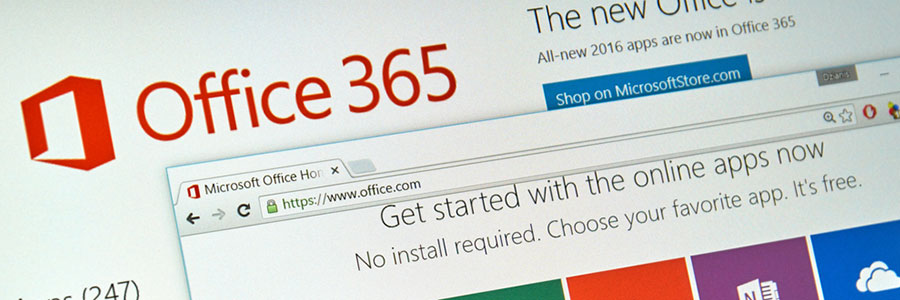If you thought virtualization was confusing, wait until you hear about hyperconvergence. By consolidating a number of virtualization services into a single piece of hardware, that runs a single piece of software, small- and medium-sized businesses can enjoy the simplicity, cost effectiveness, and security of a cloud infrastructure, in one on-site “box.
The benefits of hyperconvergence
Microsoft ending support for Office 2013

To make sure enterprises get the most out of their Office 365 package, Microsoft announced it will no longer support Office 2013 by the end of February. Instead, the tech giant will push enterprises to upgrade to Office 2016. If your business is still using the 2013 version, here are some things you need to know right away.
Moving unified communications to the cloud

Migrating your organization’s unified communications (UC) to the cloud seems like a no-brainer: it’s practical, it’s cheap, it’s the future. Big-name companies such as Cisco, IBM, Microsoft and Verizon now offer Unified communications as a Service (UCaaS), and it’s only a matter of time before it takes over the Voice over Internet Protocol (VoIP) space.
Browsers leak sensitive info to hackers

The Autofill feature fills a void in the web browsing habits of many. It eliminates the need to enter all your details when logging on your social media accounts or when checking out your basket after e-shopping. On Chrome and Safari browsers, however, danger lurks when you rely too much on autofill.
Why your business needs CRM

The right technology investment can lead to business success. With customer relationship management (CRM) software at the helm of your sales and marketing efforts, you can nurture long-lasting business relationships and improve your bottom line. If you need a little bit more convincing, we’ve compiled five more reasons why your business needs CRM.
Grows with your business
The ol’ Rolodex may have been useful for managing a few clients, but you’re going to need a better solution if you plan to maintain relationships with hundreds, possibly thousands, more.
Fruitfly: the latest Apple malware
G Suite launches new features

Tech giant Google has always listened to customer feedback to make continuous improvements to its powerful suite of applications. And in the most recent case, Google Cloud’s G Suite has introduced five new updates. What do they include and are they worth getting excited about?
Basic Mobile Management
G Suite’s Basic Mobile Management offers an agentless way to manage iOS devices by allowing admins to mandate basic security on those devices without requiring users to install mobile device management profiles.
Utilizing Google’s Cloud Print service

When you picture cloud computing and printing devices, you might think of endless copies of clouds flying out of the printer. But that analogy wouldn’t quite apply for Google’s Cloud Print service, though. This cloud-computing hybrid allows you to access both regular and internet-enabled printers through the Internet.
An old virus gets a new shot at virtualization

Virtualizing your desktops comes with a number of benefits, one of which is improved security. Unfortunately, nothing perfect lasts forever, and the virtualization industry is facing a frightening new form of malware. Although this threat is nothing more than a facelift on an old virus, it is just as dangerous as it was the first time it made headlines.



